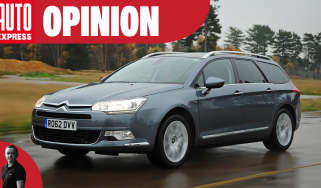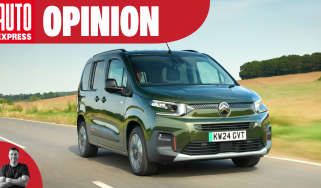Buying a new car: your complete guide
Our top tips for finding the right car for you and how to get the best bang for your buck

Big or small, cheap or luxurious, fast or frugal. When it comes to choosing a new car, we’ve never had it so good. There’s an unprecedented range of bodystyles and drivetrains available from a list of brands that, thanks to arrivals from China, Korea and even the US, seems to be growing longer by the day.
Take into account recent partnerships and the adoption of platform-sharing, and buyers’ options have widened even further. You might be surprised to know that BMW currently offers more than 60 models across its line-up while some cars, such as the Hyundai Kona, can be ordered in petrol, hybrid and electric form – each suiting a different type of owner’s personal circumstances best.
Speaking of specifications, there are optional extras to consider; manufacturers are slowly moving away from individual extras in favour of option packs, but buyers must consider all the different trim levels and equipment packages on offer, not to mention colours and interior trim finishes. According to Bentley, you can spec
a Flying Spur Hybrid in 56 billion ways.
We don’t blame you if you’re already feeling a bit daunted. Why not let Auto Express help you make sense of the marketplace, and enable you to buy the right car in the right way?
How big is your budget?
The size of your budget is the most significant factor when you’re choosing a car. So while the rest of this chart can be approached (as with the car-buying process itself) in a non-linear fashion, the first thing you do should be to work out exactly how much you want to pay.
For example, If you have 50 pence and half a yoghurt to your name, you’re probably not going to be able to afford the latest electric luxury SUV. However, if you’ve got, say, 30 grand to spend on a roomy and comfortable family car, then you could be overwhelmed by the number of options available.
What size car should I buy?
The next step is ascertaining how large (or small) of a car you need. Today, even the smallest city cars have surprisingly roomy cabins thanks to clever packing, and while there’s always that age-old joke about squashing as many people as possible into a Mini, cars almost always have a fixed number of seats and seatbelts, meaning you’ll have to carefully consider how many people you’ll be ferrying around.
It’s also worth considering the size of your family – both in the numerical and physical sense. For example, a slinky electric saloon such as the Hyundai Ioniq 6 may not be ideal if you have tall teenagers, given its sloping roofline, while you may not need a boxy SUV such as the Vauxhall Frontera if all you’re planning to carry is a toddler and/or the family pooch.

That being said, you should definitely be mindful of the number of ISOFIX points if you’re looking to carry more than a couple of children. Most cars have a minimum of two sets of these child seat anchors, although we do have a list of the cars that have three or more ISOFIX fitting points.
Finally, and perhaps most important to some, there’s boot space to consider. While we state the size of each car’s boot in cubic litres in all of our reviews, this only tells part of the story; you also need to think about how easy the boot is to access, plus the size and shape of the opening and cargo area. That’s not to mention sliding rear seats which can give you a decently sized cargo area at the expense of rear-seat legroom. Therefore, if you plan to carry something large (such as a pushchair, wheelchair or suitcase) often, it’s worth taking it along to a dealership and testing whether it’ll fit.
What body style should I choose?
Hatchback, saloon, coupé, convertible, MPV, SUV and estate – if you’re not into cars, many of these terms may be meaningless gibberish. However, each has their own distinct benefits and drawbacks, and we’ll break them down here.
Hatchbacks have long been the bread and butter of the UK car market, and it’s easy to see why. Available in cheap-and-cheerful city car form such as the Hyundai i10 all the way up to sizeable pseudo-saloons such as the Skoda Superb, there’s a hatchback for everyone. The main benefits here are an easy-to-access cargo area, as well as typically a high roofline which offers plenty of passenger headroom.
Appreciate the benefits of a hatchback but want something a little more in vogue? Introducing the SUV (Sports Utility Vehicle): the UK’s top-selling car body style. While there was a time when the only SUVs that were big 4x4s such as the Range Rover and Jeep Wrangler, the success of mid-size like the Nissan Qashqai means they now come in all shapes and sizes. The recipe? Take all the pros of a hatchback and throw in a raised ride height for better visibility and increased kerb appeal. Just expect to pay a little extra for it.

The rise of electric vehicles means we’re also seeing a return of saloons. With a lower, sleeker silhouette, they offer a lower, sportier driving position, plus their slippery shape typically offers greater electric range or miles per gallon than an SUV. The main drawback here is that the boot can be a little more difficult to access than in a hatchback or SUV. If this is an issue for you, some saloons are offered in more practical estate form – typically garnering itself a focus group-tested suffix such as ‘Touring’ or ‘Shooting Brake’. These are usually a bit more expensive than their saloon siblings, although a hatchback-style boot opening and high roofline might make it worth it for some.
Rounding things off are the less-common body styles. MPVs (multi-purpose vehicles) have recently been largely replaced by more fashionable SUVs. With boxy van-like proportions, they’re good for buyers looking to maximise cabin space. Less fussed about space and more concerned about style? Then there are coupés and convertibles. The former typically comes in the form of low-riding sports cars, although there are some two-door versions of popular saloons available. Fancy the wind in your hair? Well, you might be surprised to hear that there are fewer and fewer convertibles available to buyers nowadays. Most are sports cars and luxury cars, although there are a handful of outliers such as the Volkswagen T-Roc Cabriolet.
Should I buy a mainstream or premium car?
Broadly speaking, the car market is split into ‘volume’ players – brands which are generally positioned as more affordable – and ‘premium’ brands which have a little more kudos, luxury or performance. You might think that you’ll pay handsomely for the latter, and in pure cash terms, you might be right.
The way car finance deals often play out means that a car with a posh badge might not bump your monthly payments up much at all. The key here is the sheen and allure that premium brands provide: second-hand buyers want them as much as new-car buyers, and that keeps used values strong.
With a PCP deal, you only pay the car’s depreciation (at the agreed interest rate); with so much of the finance tied up in the car’s predicted value once the agreement ends, it might cost less than you think.
It’s not always as clear-cut as it seems, though. Some brands, such as Porsche, have standard equipment lists that are more miserly than Ebenezer Scrooge at Christmas, whereas even the cheapest MG models, for example, have almost all the kit you’ll ever need. Tick the option boxes for heated seats, enhanced driver-assistance functions and some flashier wheels, and the price difference could be astronomic.
So we recommend writing down all the features you really want or need, and then compare like-for-like to see how much it will cost you to have them in rival premium and mainstream models. You may be surprised.
What is the best fuel type?
Wind the clock back a couple of decades and your only real choices when it came to fuel types were petrol and diesel and while both are still around, there’s several more to choose from.
Petrol remains by far the most popular fuel type – and for good reason. Small petrol engines are typically cheap to run and produce which makes them appealing to penny-pinching motorists, plus the incorporation of turbochargers and mild-hybrid tech means they can be pretty punchy, too.
Diesel power has fallen out of favour in recent years given the negative press it’s received. The particulates diesel vehicles emit can be harmful to human health, which in turn incurs higher tax rates for both private and company car buyers. They do come with benefits, though; diesel cars are typically very economical, which makes them ideal for high-mileage drivers doing a lot of cross-country driving. Diesel engines also offer plentiful low-range torque, making them the ideal choice for towing.

Electricity has been touted as the fuel of the future and the market has already become flooded with EVs, well before zero-emissions vehicles become the only option post-2035. EVs, while expensive to buy, offer rock-bottom running costs (provided you’re able to charge at home) and many are outfitted with powerful electric motors that may give you a pleasant shock to the system whenever you first put your foot down.
Hybrids, as their name suggests, offer the best of both worlds, from the smooth power delivery and low running costs of an EV, plus the reliability and familiarity of a petrol or diesel car. Full-hybrids won’t need to be charged, whereas plug-in hybrids do, although the latter is able to travel short distances on electric power alone.
These aren’t the only fuel choices you have, but by and large are what you’ll most commonly encounter. Some models, such as the Dacia Duster, are available with a Bi-Fuel engine,
which uses petrol and liquefied petroleum gas (LPG), although the latter isn’t widely sold.
Hydrogen fuel-cell cars are also starting to become popular in Europe and just emit water from their tailpipes.
How much horsepower do I need?
A car’s power figure is a pretty meaningless statistic as its ultimate speed also depends largely on things such as a vehicle’s weight and/or transmission. However, anything with around 150bhp should offer more than plentiful performance for most; of course, lightweight superminis can still feel pretty nippy with as little as 100bhp, while big SUVs probably need a little bit more than 150bhp to shift all that metal around.
We’ll also take a moment here to dispel a common misconception. A bigger engine means more power, right? Not necessarily; even the smallest 1.0-litre engines, when equipped with a turbocharger, can be more powerful than some 2.0-litre units. Hybrid technology can also provide a short boost of extra power, making smaller engines feel more gutsy than you might expect.
Should I test drive a car before buying it?
Every week, Auto Express uncovers the useful features that can make life with your car that much easier, but there’s nothing better than sampling a car for yourself on a test drive. Of course that means making sure you’re happy with the comfort, handling and performance on offer, but there’s so much more to check than that.
Firstly, if you, your family or regular passengers have limited mobility, check that they’re able to climb in and out comfortably. Low-slung cars are more fun, but dropping into the seats, then hauling yourself out certainly isn’t. Similarly, high-riding SUVs may require you to step up into the car. And once you’re strapped in, make sure you and your passengers can get comfortable – the height of the seat can influence how much you’re able to stretch out.
Plenty of other areas seem trivial on first inspection, but after several years could really grate: voice recognition that doesn’t understand your accent, wireless charging pads or shelves that don’t properly hold your smartphone, while a lack of rear cup-holders or an interior light in the back can really frustrate families.
Finally, have a play around with the car’s infotainment. There’s plenty to love and loathe about some systems, so see how intuitive the system in front of you is. Pair your phone, input some destinations in the sat-nav, and if a touchscreen controls the air-conditioning, have a play to see if you get on with it.
What about sustainability?
Sustainability is big news, but it stretches beyond the obvious. An increasing number of car makers are offering vegan trim options alongside traditional leather finishes, and it’s no longer the preserve of high-end brands, either. The top-selling Ford Puma, for example, has an artificial leather steering wheel.
If you want a full-vegan interior, look for Artico-equipped Mercedes, and Veganza from BMW. Polestar, in the same vein, has flipped the convention on its head by fitting vegan-friendly interiors as standard, with leather firmly tucked away in the options list – and even this comes from an ethical source up in Scotland, earning Polestar an award from PETA (People for the Ethical Treatment of Animals).
But perhaps the biggest talking point within sustainability regards fuel. Going electric, for many, requires little more than a shift in mindset and some slightly deeper pockets. But for some the issues around the production of cobalt and other rare-earth metals is inescapably problematic.
That being said, electric cars are undeniably more efficient than the petrol or diesel equivalent. A study by the U.S’ Environmental Protection Agency (EPA) shows that EVs convert anything between 87–91 per cent of the electricity they use into movement, while internal-combustion cars only convert anything between 16–25 per cent of the fuel they burn.
Do you really need a car?
Perhaps the most controversial question of all is whether you need a car in the first place. It’s certainly a route that many motorists have chosen.
Broadly speaking, there are two options available: firms such as Zipcar, which enable motorists to rent a car by the hour, or there are peer-to-peer operations, where owners can rent out their own car, or share a ride to an agreed destination.
Arguably car-sharing schemes work better in a city, where you’re likely to have more alternatives to driving. But for those who travel little more than on the occasional trip to see a relative or journey to the shops, it could be a cost-effective solution.

Generally speaking, you’ll need to hand over your driving licence details and pay an up-front fee to take advantage of these schemes. You book and pay for cars through an app, and depending on the operator, you may have to drop the car off at a predetermined location.
Another relatively recent phenomenon is the car subscription service. Drivers can choose from manufacturer-specific offerings or third-party providers with multiple brands available, plus there are EV-only schemes, too.
These subscription plans all work in broadly the same way, in that you pay a monthly membership fee and you are able to choose a car that is right for you. However, unlike other finance deals, you have the option to change your car every so often.
While none of these options are likely to appeal to enthusiast readers, there’s no escaping the fact that our favourite car brands are increasingly focusing on a future as ‘mobility providers’, in the expectation that individual car ownership will ultimately decline. Perhaps that means there’s all the more reason to enjoy that ‘new car feeling’ while we still can.
Should I buy a car online?
While we certainly recommend going into a traditional car dealership to try a car for yourself, our biggest recommendation is for prospective buyers to skip the often anxiety-inducing process of haggling and consider purchasing their car online.
Auto Express now offers its very own Find a Car service, which allows dealers from across the UK to compete to give you the best offer, saving you money in the process. You can even book a test drive through this service and organise free delivery of your car to your doorstep once you decide to go ahead with everything.
Buy a car with Auto Express. Our nationwide dealer network has some fantastic cars on offer right now with new, used and leasing deals to choose from...
Find a car with the experts











